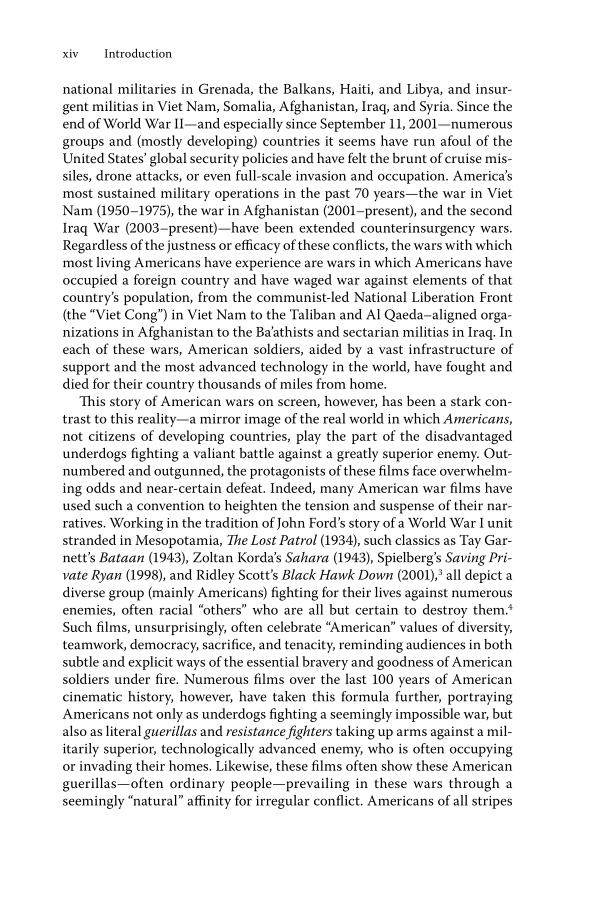xiv Introduction national militaries in Grenada, the Balkans, Haiti, and Libya, and insur- gent militias in Viet Nam, Somalia, Afghanistan, Iraq, and Syria. Since the end of World War II—and especially since September 11, 2001—numerous groups and (mostly developing) countries it seems have run afoul of the United States’ global security policies and have felt the brunt of cruise mis- siles, drone attacks, or even full-scale invasion and occupation. America’s most sustained military operations in the past 70 years—the war in Viet Nam (1950–1975), the war in Afghanistan (2001–present), and the second Iraq War (2003–present)—have been extended counterinsurgency wars. Regardless of the justness or effi cacy of these confl icts, the wars with which most living Americans have experience are wars in which Americans have occupied a foreign country and have waged war against elements of that country’s population, from the communist-led National Liberation Front (the “Viet Cong”) in Viet Nam to the Taliban and Al Qaeda–aligned orga- nizations in Afghanistan to the Ba’athists and sectarian militias in Iraq. In each of these wars, American soldiers, aided by a vast infrastructure of support and the most advanced technology in the world, have fought and died for their country thousands of miles from home. Th is story of American wars on screen, however, has been a stark con- trast to this reality—a mirror image of the real world in which Americans , not citizens of developing countries, play the part of the disadvantaged underdogs fi ghting a valiant battle against a greatly superior enemy. Out- numbered and outgunned, the protagonists of these fi lms face overwhelm- ing odds and near-certain defeat. Indeed, many American war fi lms have used such a convention to heighten the tension and suspense of their nar- ratives. Working in the tradition of John Ford’s story of a World War I unit stranded in Mesopotamia, Th e Lost Patrol (1934), such classics as Tay Gar- nett’s Bataan (1943), Zoltan Korda’s Sahara (1943), Spielberg’s Saving Pri- vate Ryan (1998), and Ridley Scott’s Black Hawk Down (2001), 3 all depict a diverse group (mainly Americans) fi ghting for their lives against numerous enemies, often racial “others” who are all but certain to destroy them. 4 Such fi lms, unsurprisingly, often celebrate “American” values of diversity, teamwork, democracy, sacrifi ce, and tenacity, reminding audiences in both subtle and explicit ways of the essential bravery and goodness of American soldiers under fi re. Numerous fi lms over the last 100 years of American cinematic history, however, have taken this formula further, portraying Americans not only as underdogs fi ghting a seemingly impossible war, but also as literal guerillas and resistance fi ghters taking up arms against a mil- itarily superior, technologically advanced enemy, who is often occupying or invading their homes. Likewise, these fi lms often show these American guerillas—often ordinary people—prevailing in these wars through a seemingly “natural” affi nity for irregular confl ict. Americans of all stripes
Document Details My Account Print multiple pages
Print
You have printed 0 times in the last 24 hours.
Your print count will reset on at .
You may print 0 more time(s) before then.
You may print a maximum of 0 pages at a time.


















































































































































































































































